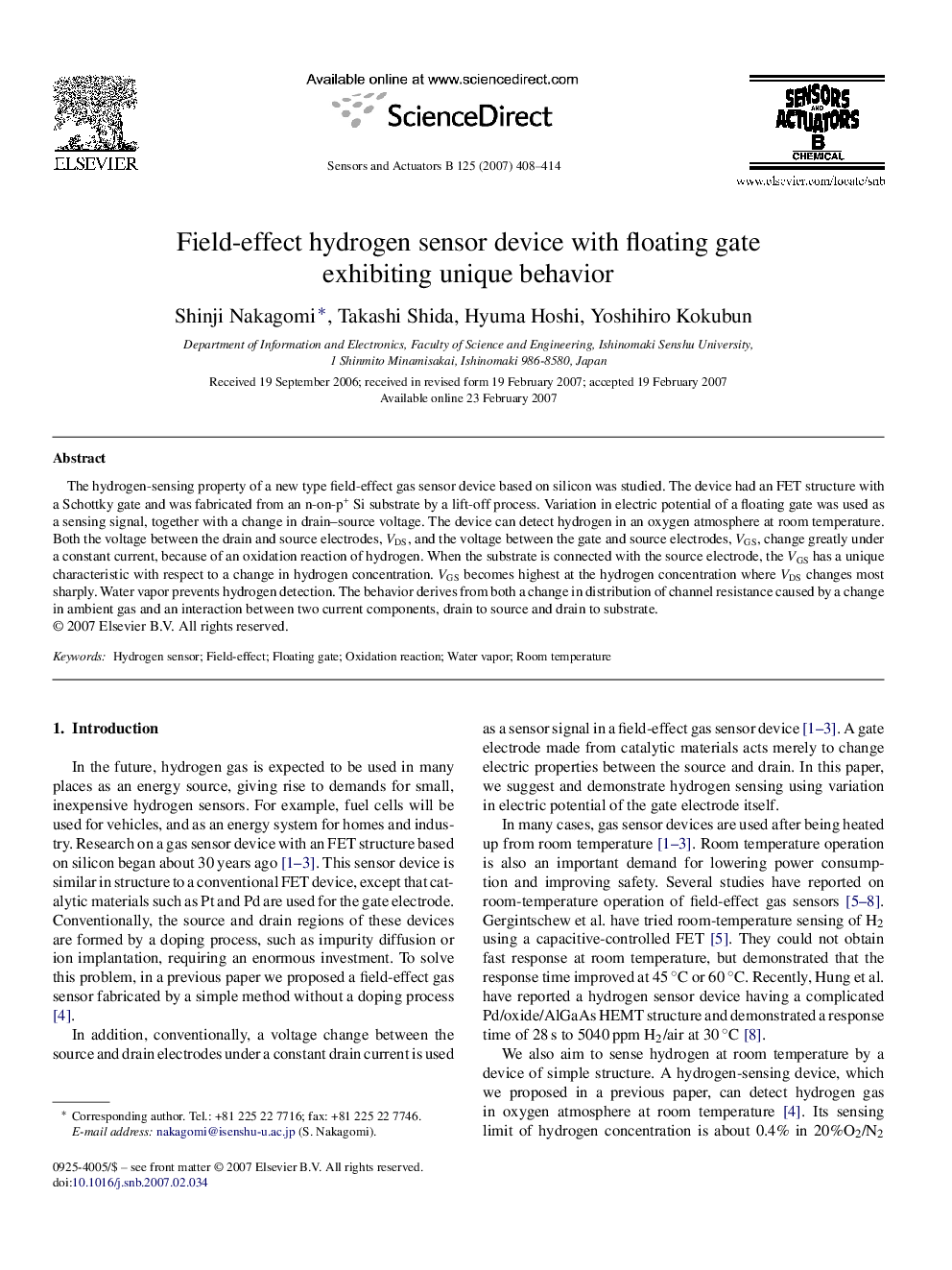| Article ID | Journal | Published Year | Pages | File Type |
|---|---|---|---|---|
| 746820 | Sensors and Actuators B: Chemical | 2007 | 7 Pages |
The hydrogen-sensing property of a new type field-effect gas sensor device based on silicon was studied. The device had an FET structure with a Schottky gate and was fabricated from an n-on-p+ Si substrate by a lift-off process. Variation in electric potential of a floating gate was used as a sensing signal, together with a change in drain–source voltage. The device can detect hydrogen in an oxygen atmosphere at room temperature. Both the voltage between the drain and source electrodes, VDS, and the voltage between the gate and source electrodes, VGS, change greatly under a constant current, because of an oxidation reaction of hydrogen. When the substrate is connected with the source electrode, the VGS has a unique characteristic with respect to a change in hydrogen concentration. VGS becomes highest at the hydrogen concentration where VDS changes most sharply. Water vapor prevents hydrogen detection. The behavior derives from both a change in distribution of channel resistance caused by a change in ambient gas and an interaction between two current components, drain to source and drain to substrate.
